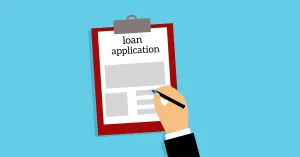The Rules of Thumb blog from MoneyThumb discovered a study at Super Money that we believe will be of great interest to our readers. The title of the study is the 2019 Personal Loan Industry Study and it is a very in-depth analysis complete with charts and graphs of the personal loan industry and the changes that have taken place.
If you would like to read the full study follow this link. For your reading convenience, below we have listed the key takeaways from the study that would be of interest to both personal loan lenders and borrowers.
How Big is the Personal Loan Industry?
- As of the third quarter of 2018, the Federal Reserve Bank estimated the value of consumer loans, at all commercial banks, to be $1.49 trillion in the United States.
- The size of the personal loan sector grew by 269% in the last 5 years. The sector has seen double-digit growth rates in the last 4 years.
- The median value of installment loans has more than doubled in the last 25 years.
The Personal Loan Industry Still Has a Lot of Room for Growth
- According to the Federal Reserve’s 2016 Report on Economic Wellbeing of U.S. Households, only 10% of respondents applied for a personal unsecured loan in the previous year. The big players in consumer credit are credit cards (65%) and auto loans (26%).
- What many consumers may not know is that a personal loan seems to be the easiest form of unsecured credit to qualify for. In 2016, one in three credit card applicants were denied at least once. Only one in four personal loan applicants were denied.
- The average interest rate for a personal loan is 4% lower than it was 20 years ago.
- Personal loans are becoming the preferred choice to pay off credit card debt.
Fintech Lenders Are Fueling Growth in the Personal Loan Sector
A fintech lender is an online lender that bases its underwriting, risk assessment, funding, and marketing on financial technology. Most lenders, including traditional banks and credit unions, now fit this description. But the term is generally used for startups and relatively new firms that operate exclusively online and use alternative data sources and new credit models that traditional banking channels don’t consider.
- Since 2010, the personal loans sector has seen a sharp increase in the number of lenders and significant shifts in the market share of unsecured installment loan balances.
- According to a 2016 TransUnion report, in 2015 there were 51 more lenders that were generating at least 10,000 annual installment loan accounts than there were in 2010. The type of lenders dominating this sector has also shifted dramatically.
- In 2010, Fintech (financial technology) lenders only represented 3% of the sector. Banks, credit unions, and traditional finance companies each had roughly a third of the market. In 2015, Fintech lenders became the biggest lender type in the sector with a 30% share.
Personal Loans Are No Longer Considered a "Subprime" Product
- The personal loan sector has the reputation of being a product for higher-risk consumers. Although subprime borrowers are still well represented, most of the growth is in the prime and near-prime risk tiers. As the market grows, the lion’s share of personal loans is shifting to moderate risk borrowers.
What Does the Future of the Personal Loan Sector Look Like?
- Personal loans have sustained regular growth in recent years and reached their pre-recession levels. We have seen a 20% increase in the last five years. The average debt balance per borrower in unsecured personal loans has also grown consistently. In 2014, it was $6,315. By 2017, it grew to $7,781, a 0.5% increase from 2016
- This growth is starting to stagnate. Personal loan balances grew in 2017, but only by 10.8% to $107 billion, according to TransUnion. Originations, on the other hand, dropped by 6.9% (2.8 million). when compared to 2016.
- The economic fundamentals of consumer lending are encouraging. Consumers have greater access to credit. As of 2017, there are over 200 digital lenders in the U.S. alone, and Morgan Stanley predicts global volume reach $290 billion by 2020.
- Predicting financial trends is risky but two trends indicate that this growth will level off: interest rates and competition. Interest rates have been at historic lows for nearly a decade but The Federal Reserve Bank is gradually increasing them. Higher interest rates will probably reduce lending volumes.
In Summary
Here’s a quick summary of what we know about the personal loans market.
- The consumer lending market is a favorite source of credit for millions of consumers and it’s growing.
- Household expenses, debt consolidation, and medical expenses are the main reasons consumers get a personal loan.
- However, the growth rate of new loan originations is stagnating.
- Nevertheless, the consumer lending market still shows solid economic fundamentals.
- The access to credit for consumers has increased and so have personal loans’ balances.
- Delinquency rates are low.
- Interest rates are rising, which could reduce consumers appetite for credit.





















Add comment